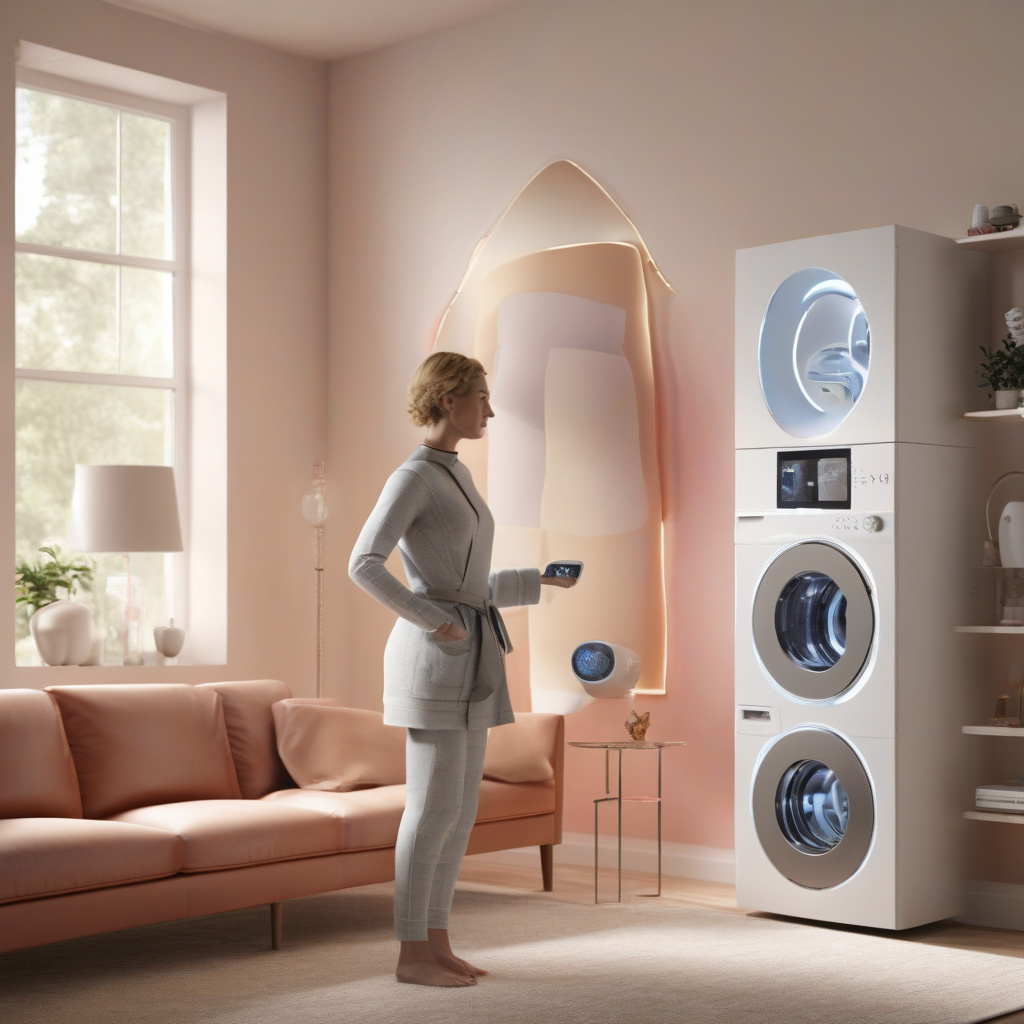China’s Smart Fabric Turns Everyday Clothing into Remote Control for Home Appliances
Researchers from Soochow University in China have developed a textile fabric that turns clothes into a remote control for home appliances. This innovative smart fabric integrates advanced technology into everyday clothing, allowing users to control various electronic devices at home with simple gestures or touches on their garments.
The smart fabric is made of flexible, lightweight materials that are woven with conductive fibers and sensors. These components enable the fabric to detect and respond to specific gestures or commands, such as swiping the sleeve to adjust the temperature of a smart thermostat, tapping the pocket to turn on the lights, or pinching the hem to start the coffee maker.
One of the key advantages of this smart fabric is its convenience and practicality. Instead of reaching for a smartphone or a remote control, users can simply interact with their clothing to operate different appliances in their homes. This seamless integration of technology into everyday garments offers a hands-free and intuitive way to control the surrounding environment.
Moreover, the smart fabric opens up a wide range of possibilities for home automation and Internet of Things (IoT) applications. By embedding sensors and conductive elements into clothing, researchers have created a novel interface that bridges the gap between wearable technology and smart home devices. This integration not only enhances the functionality of clothing but also enriches the overall user experience in a connected home environment.
In addition to its practicality, the smart fabric also holds potential for enhancing accessibility and inclusivity for individuals with disabilities or mobility impairments. By providing a simple and intuitive interface through clothing, this technology enables a more seamless interaction with the surrounding environment, empowering users to independently control various devices and appliances in their homes.
Furthermore, the development of smart fabric represents a significant advancement in the field of textile engineering and smart materials. By merging electronics with textiles, researchers have pushed the boundaries of traditional garment design and paved the way for a new generation of interactive and functional clothing.
As this technology continues to evolve, we can expect to see further innovations in the integration of smart fabrics into our daily lives. From interactive sportswear that tracks performance metrics to healthcare garments that monitor vital signs, the possibilities are endless for how smart fabric can enhance our clothing and lifestyle in the future.
In conclusion, China’s smart fabric represents a groundbreaking development in the realm of wearable technology and home automation. By seamlessly integrating electronic controls into everyday clothing, this innovative fabric offers a glimpse into a future where our garments not only clothe us but also empower us to interact with the world around us in unprecedented ways.
smart fabric, textile innovation, home automation, wearable technology, IoT integration











